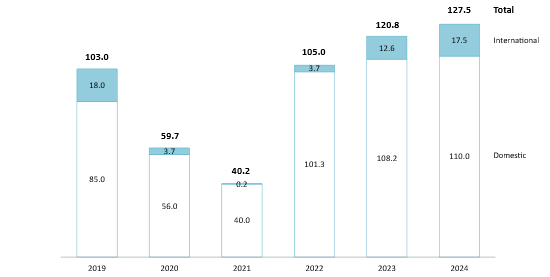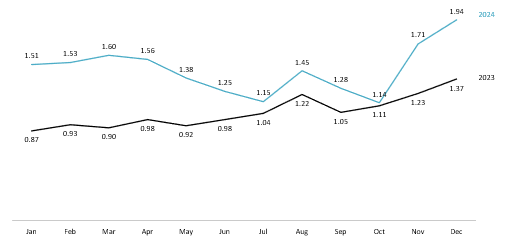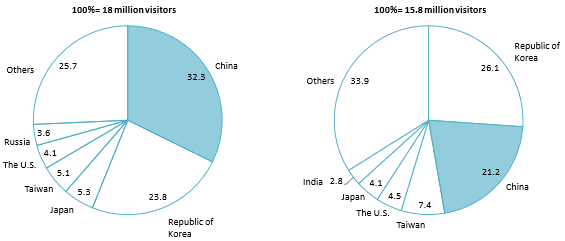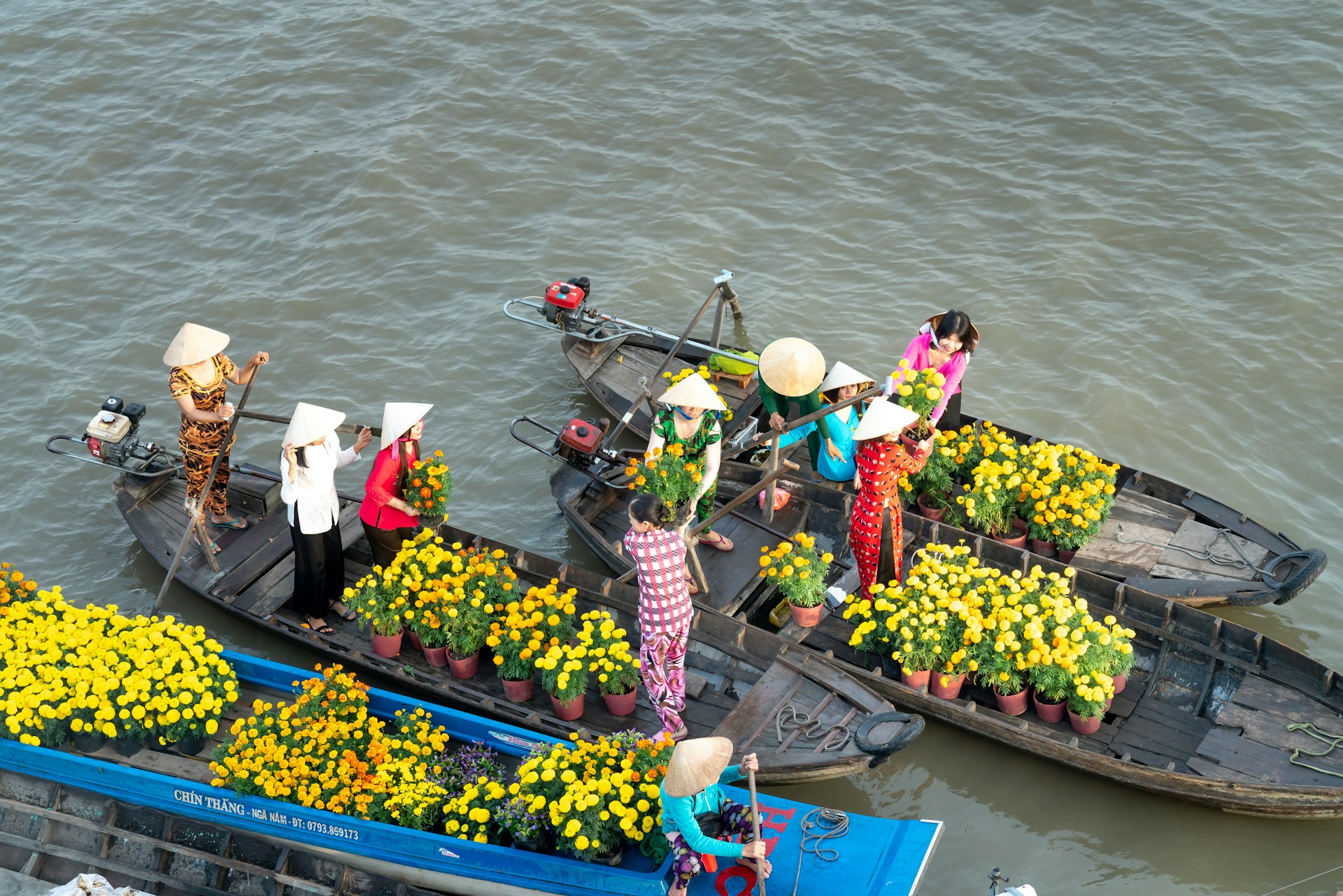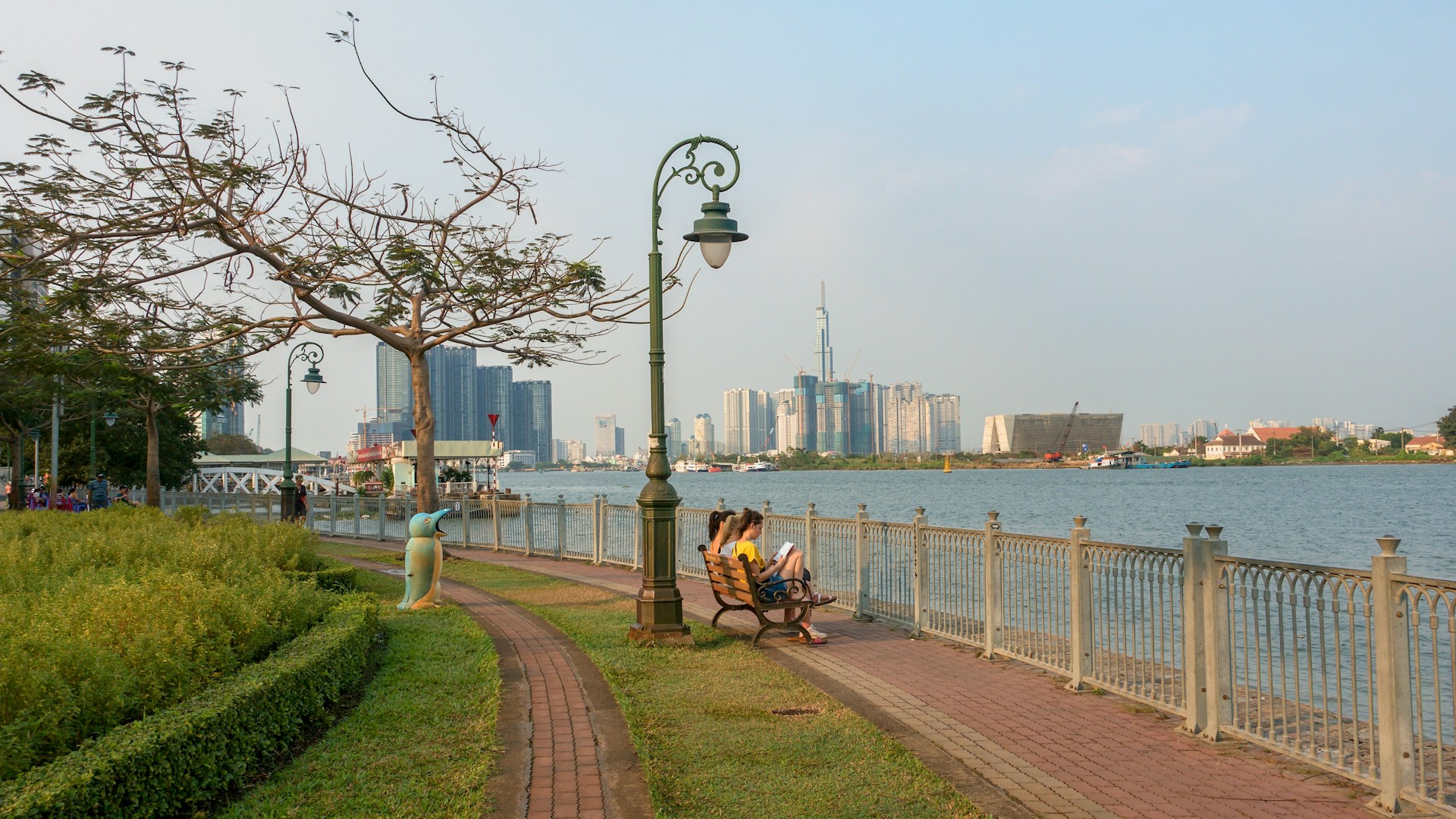
14Jan2025
Latest News & Report / Vietnam Briefing
Comments: No Comments.
Vietnam’s tourism industry plays a pivotal role in driving economic growth, generating employment, and boosting foreign exchange earnings. Entering 2025, the industry is set to not only recover but significantly strengthen its position as a spearhead economic sector with green growth and world-leading development capacity.
Overview of Vietnam’s tourism in 2024
Vietnam’s tourism sector experienced a rollercoaster journey between 2019 and 2024. In 2019, the Vietnam National Authority of Tourism (VNAT) reported that the country welcomed a record 18 million international visitors with a YOY growth rate of 16.2%, rising to the 4th place in Southeast Asia[1]. The country was solidifying its status as a major global travel destination with a diverse offering, including heritage and cultural sites, culinary destinations, and other entertainment services recognized globally.
However, the COVID-19 pandemic disrupted global travel, causing international arrivals and domestic travel to plummet in 2020 and 2021[2]. Despite the challenges, the Vietnamese government implemented measures to support the tourism industry, including promoting domestic travel and preparing for a future reopening[3]. By 2022, international borders reopened, and the sector began to recover, welcoming nearly 3.7 million foreign tourists and recording over 101 million domestic visitors, surpassing the pre-Covid period [4]. In 2023, the recovery accelerated, with over 12 million international visitors arriving, driven by demand from key markets like South Korea, China, and Europe.
Vietnam’s international and domestic tourists, from 2019 to 2024 (Unit: million visitors)
Source: VNAT, TITC, B&Company synthesis
In 2024, the tourism sector carried on its recovery momentum from previous years and achieved many impressive targets, becoming a key economic sector, and contributing to the socio-economic development of localities and the growth of Vietnam. Early reports from the Ministry of Culture, Sports, and Tourism (MoCST) show that Vietnam welcomed 127.5 million tourists in 2024, a 5.6% growth rate, contributing $33 billion to the economy[5]. Domestic travelers dominated with 110 million, while international arrivals reached 17.5 million, which was an increase of nearly 40% compared to the previous year and approached the peak in 2019. International visitors in early 2024 grew sharply, with year-over-year increases of 51% to 79%. Although growth slowed from June to October, foreign tourist numbers rebounded in November and December, enabling the tourism sector to achieve its annual target.
Number of Vietnam’s international visitors in 2023 and 2024 (Unit: million visitors)
Source: VNAT, B&Company synthesis
The pandemic has also introduced some shifts in the structure of international tourists’ source markets. Korea is the dominant source market of tourism with over 4.1 million visitors in 2024 and accounting for over a quarter of Vietnam’s international arrivals. China, once a leading market, saw declines due to extended pandemic restrictions[6]. However, the first 11 months of 2024 showed a strong rebound, with Chinese arrivals doubling from 1.5 million to 3.4 million, reaffirming its importance to Vietnam’s tourism industry[7]. India emerged as a key market, with visitors rising from 169,000 in 2019 to 445,000 by late 2024, making it Vietnam’s sixth-largest source of international tourists.
Structure of Vietnam’s international visitors by country in 2019 and November 2024 (Unit: %)
Source: VNAT, B&Company synthesis
Ho Chi Minh City, Hanoi, and Quang Ninh leads the country in visits and tourism revenue with different offerings for both domestic and international visitors.
- – Ho Chi Minh City welcomed 6.1 million international visitors and 38 million domestic visitors in 2024[8]. The city is a globally-recognized Meetings, Incentives, Conferences, and Exhibitions (MICE) tourism spot[9]. The city also hosted events such as Ho Chi Minh City Tourism Festival, Ho Chi Minh City Waterway Festival, Ho Chi Minh City International Tourism Fair that are appealing to both domestic and international travelers.
- – Hanoi recorded over 28 million arrivals in 2024, including 6.65 million international tourists[10]. The capital of Vietnam has developed a well-structured tourism ecosystem with a collaboration between government bodies, associations, airlines, and businesses[11]. The city focuses on developing new experiential tourism products linked to heritage sites and traditional villages along routes[12].
- – Quang Ninh drew over 19 million international and local visits in 2024 with Ha Long Bay, a UNESCO-recognized World Natural Heritage[13]. The province promotes international visits through cruise tourism and acts as a tourism hub connecting the region and the world[14].
Targets and development prospects of the tourism sector in 2025
The tourism industry is expected to fully recover in 2025 and will lay a solid foundation to propel development in the future. As outlined in Decision No. 509/QD-TTg signed in 2024, Vietnam targets to welcome between 25 to 28 million international visitors, exceeding the pre-COVID peak of 18 million in 2019[15]. Domestic tourism is projected to reach 130 million, with an annual growth rate of 8-9%. The whole sector aims to contribute around 8 to 9% of the national GDP, generating jobs for over 6.3 million people. To achieve such goals, the government has outlined six development orientations to support the growth of the sector.
Table 1: Development Orientations in the Tourism System Planning for the Period from 2021 to 2030, with a vision to 2045 in Decision No. 509/QD-TTg in 2024
| No. | Development Orientation | Content |
| 1 | Development of domestic tourism | – From 2021 to 2025: Sustaining current growth rate.
– From 2026 to 2030: Prioritizing high-paying segments and exploring emerging markets like golf tourism, sports tourism, and adventure tourism. |
| Development of international tourism | – From 2021 to 2025: Recovering traditional source markets and attracting emerging markets such as India and Middle Eastern countries.
– From 2026 to 2030: Maintaining and expanding traditional markets with a shift towards increasing the share of high-spending visitors. |
|
| 2 | Development of tourism products | – Developing key tourism products:
– Developing new tourism offerings such as MICE tourism, cruise tourism, sports and adventure tourism, industrial tourism, etc. – Creating distinct regional tourism products. |
| 3 | Tourism spatial organization development | Developing Vietnam’s tourism space into 6 Regions, 3 Growth Poles, 8 Dynamic Areas, 5 Major Tourism Corridors, and 11 Tourism Centers to promote regional offerings. |
| 4 | Tourism Investment Development Orientation | Total estimated investment demand is estimated to be 3,600 trillion VND coming from State budget funding (3-5%) and private sectors (95-97%).
– Period 2021-2025: Approximately 1,600 trillion VND. – Period 2026-2030: Approximately 2,000 trillion VND. |
| 5 | Tourism Enterprise Organization and Development | – Develop a competitive, branded tourism enterprise system engaged in regional and global tourism supply chains.
– Diversify business models to align with market trends and development needs. |
| 6 | Tourism Human Resource Development | – Develop a skilled workforce that meets market demands;
– Build a high-quality workforce with a strong sense of responsibility; – Focus on enhancing vocational skills, management capabilities, and tourism governance. |
Source: The Government’s Electronic Portal
However, some challenges can hinder the growth of Vietnam’s tourism industry. Firstly, the increase in domestic flight tickets, especially during national holidays, threatens the sector’s sustainable growth as outbound tourism becomes more appealing to Vietnamese people[16]. Secondly, Vietnam’s tourism also faces fierce competition internationally. According to the WEF’s Travel & Tourism Development Index 2024, Vietnam only ranked 59th globally, with a major shortcoming in tourist services and infrastructure which ranked 89th[17]. This highlights the need for better development strategies focusing on improving the ecosystem’s infrastructure to improve Vietnam’s competitiveness globally.
Conclusion
Vietnam’s tourism industry has shown remarkable resilience and adaptability, overcoming challenges to emerge stronger than ever. In 2024, the sector is recovering and thriving, thanks to strategic government policies, robust infrastructure development, and an emphasis on sustainability. Looking ahead to 2025, Vietnam’s tourism landscape is set for even greater success. By embracing innovation, promoting emerging destinations, and prioritizing cultural and environmental preservation, Vietnam is poised to become a global leader in the tourism industry.
[1] VNAT. Vietnam Tourism Annual Report 2019 <Assess>
[2] VNAT. Looking Back at Vietnam Tourism in 2020: Responding to COVID-19, Recovering Activities, and Gaining Global Recognition <Assess>
[3] VNAT. Vietnam Tourism Strives to Recover and Build Momentum for Development in the New Normal <Assess>
[4] Tourism Information Technology Center (TITC). December Tourism Information <Assess>
[5] MoCST. Looking Back at 2024: A Bright Future for Vietnam’s Tourism Industry <Assess>
[6] Vietnamplus. The number of Chinese tourists visiting Vietnam is showing signs of recovery <Assess>
[7] VNAT. International visitors statistics <Assess>
[8] Vietnamplus. Localities with the Highest Tourism Revenue and Visitor Numbers in Vietnam in 2024 <Aover ssess>
[9] VNAT. World MICE Awards calls out Vietnam destinations and businesses <Assess>
[10] Vietnamplus. Localities with the Highest Tourism Revenue and Visitor Numbers in Vietnam in 2024 <Aover ssess>
[11] MoCST. Hanoi Tourism Thrives Thanks to Innovative Approaches <Assess>
[12] VNAT. Hanoi aims to welcome 25.6 million tourists in 2024 <Assess>
[13] Unesco – WHC. Ha Long Bay – Cat Ba Archipelago <Assess>
[14] MoCST. The Journey of New Aspirations for Quang Ninh Tourism <Assess>
[15] TVPL. Decision No. 509/QD-TTg on the Approval of the Tourism System Planning for the Period 2021-2030, Vision to 2045 <Assess>
[16] Vietnam Investment Review. The challenges to overcome for Vietnam’s tourism future <Assess>
[17] WEF. Travel & Tourism Development Index 2024 <Assess>
* If you wish to quote any information from this article, please kindly cite the source along with the link to the original article to respect copyright.
| B&Company
The first Japanese company specializing in market research in Vietnam since 2008. We provide a wide range of services including industry reports, industry interviews, consumer surveys, business matching. Additionally, we have recently developed a database of over 900,000 companies in Vietnam, which can be used to search for partners and analyze the market. Please do not hesitate to contact us if you have any queries. info@b-company.jp + (84) 28 3910 3913 |
